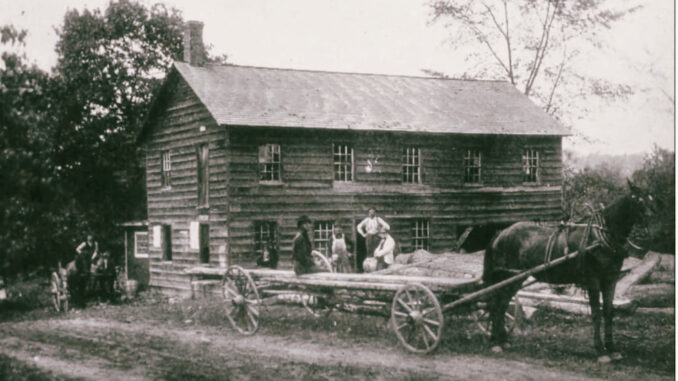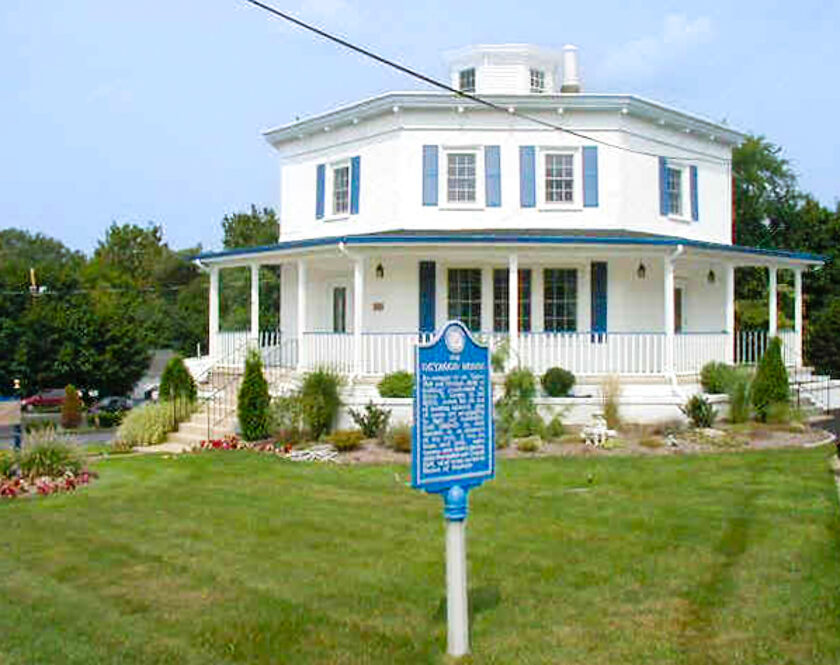
MONTVALE—In the late 19th and early 20th centuries, Garret Hering’s sawmill was on Grand Avenue across from where the Montvale Post Office now stands. Every October, the building also became a cider mill.
The story of this mill is inextricably linked with that of the Octagon House that still sits a short distance away. The Octagon House was built by John Blauvelt upon land he had inherited in 1832. That land also included a sawmill and a mill pond from which ice was harvested during the winter and sold in the summer.
In 1857, Blauvelt’s daughter, Jane Amelia, married Garret Hering. After Blauvelt’s death in 1882, Garret, Jane, and their three children moved into the Octagon House and Garret continued the operation of the sawmill and ice harvesting businesses.
Hering was a strong voice in petitioning for the creation of the Borough of Montvale in 1894. That same year, he was the first freeholder to represent Montvale in the county seat, Hackensack. He was also an early mayor of the borough, serving from 1898-1901, a station agent for the railroad, a justice of the peace, and Montvale’s postmaster.
In the 1923 “History of Bergen County,” author Frances A. Westervelt recalled that Hering’s mill was famous throughout the county for producing the purest apple cider.
In 1906, Hering advertised “fresh, sweet, pure cider in any quantity” in the cent-a-word column of the Montvale Standard, a weekly newspaper of the era. Hering did not list a price, but another seller showed 20 cents a gallon, which is probably indicative of the going rate at the time.
That same autumn, Hering’s mill was mentioned in a news clipping about a runaway horse-drawn wagon. The article, Cider Lays the Dust, went as follows:
“An exciting runaway occurred in Montvale on Wednesday. A team hitched to a lumber wagon and belonging to J. H. Cooper, the Pearl River milkman, took fright at an approaching train and started off as fast as the horses could run. Gus Rubins, the driver, was busy on the floor of the freight shed at the time. On the wagon were one barrel and one keg of cider fresh from Squire Hering’s cider mill on the other side of the track.
“As the horses ran and the wagon bumped over the stones in the road, the barrel and the keg thumped one another until the keg burst wide open. The precious fluid left a snake-like streak in the track of the runaway. The horses, of course, headed for home. They ran all the way to Pearl River, and finally landed at their stable hot, but happy. The barrel was saved.”

